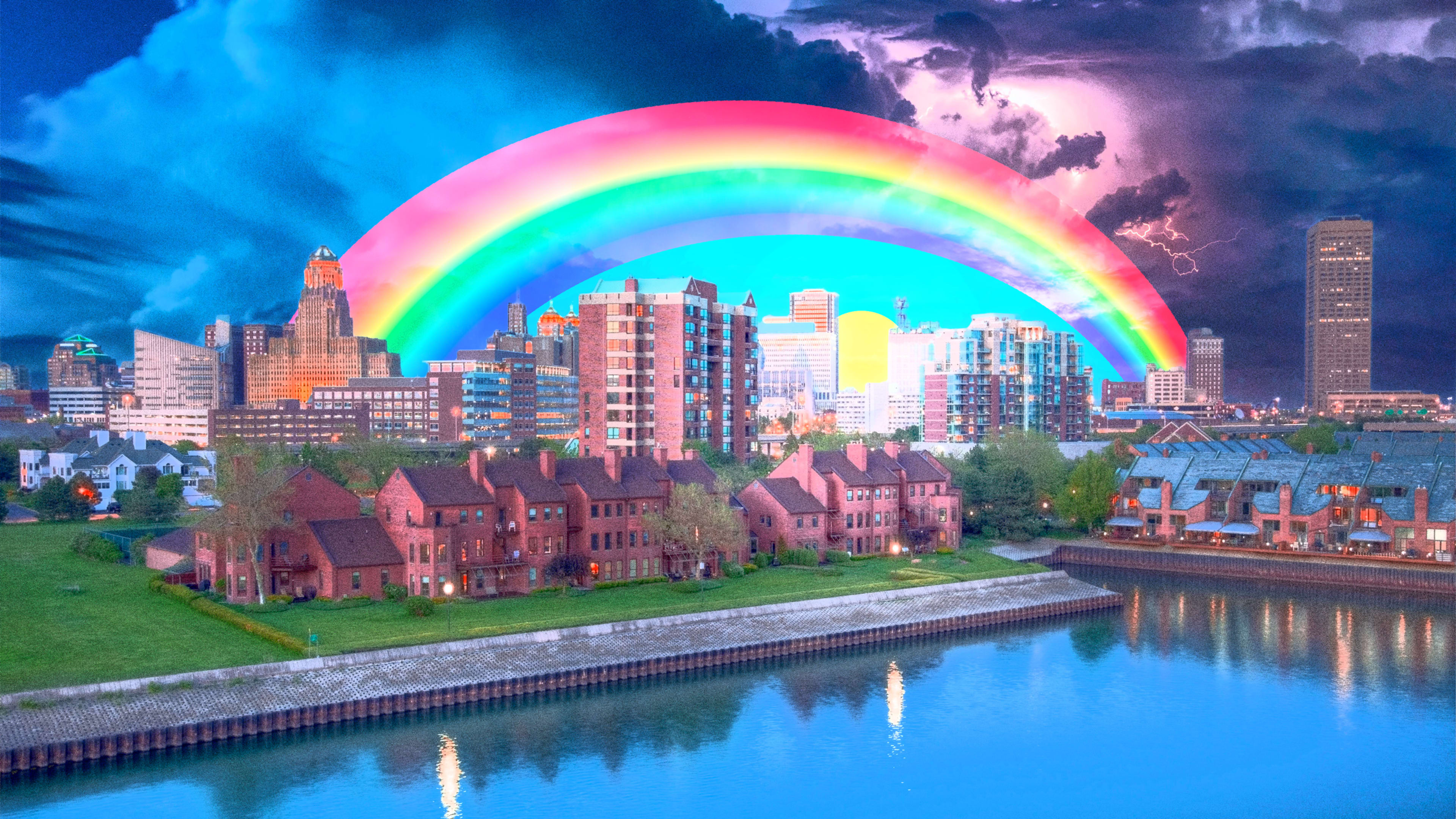It’s not possible to move to escape climate change. But some places have more challenges than others—like the suburbs of Boulder, Colorado, where a rare winter fire destroyed hundreds of homes in December and a second fire nearby forced more evacuations in March. At some point, after repeated fires or floods or extreme heat waves, more people are likely to try to relocate, and though no city is immune from climate impacts, some will be hit less hard. Will those so-called climate havens be ready for climate migrants?
Buffalo, New York, which the mayor dubbed a “climate refuge city” in 2019, is one contender. While Miami may have 114 days over 100 degrees Fahrenheit each year by the middle of the century, Buffalo might experience only eight extremely hot days a year. (Extreme heat is the deadliest climate impact now in the U.S., killing hundreds of people annually.) Buffalo is at low risk from hurricanes. There’s less risk of wildfire than in the Western U.S., and though summer droughts may increase, the city has an ample source of freshwater in Lake Erie. Because the population dropped for decades—it’s now about half of the peak of over half a million people in the 1950s—there’s also room for more people to move back.
The city is working now to become more resilient, from adding porous pavement and parks that can soak up rain to installing more solar power and retrofitting old houses to become more energy efficient. (It already relies on renewable energy, with hydropower from Niagara Falls as a major source of electricity.) Buffalo is also continuing work to increase and improve affordable housing. “A lot of it is just core city building,” says Brendan Mehaffy, executive director of the City of Buffalo’s Office of Strategic Planning. “The city of Buffalo has had an influx of population recently.” People have been moving in for various reasons—some climate-related, including 3,000 people who relocated from Puerto Rico in the wake of Hurricane Maria.
The focus, Mehaffy says, is improving quality of life for current residents while welcoming others. But he didn’t point to detailed plans to prepare for climate migrants specifically. Other cities in similar positions, like Ann Arbor, Michigan or Duluth, Minnesota, are also in early stages of considering what it means to be a climate haven or refuge, says Lena Geraghty, program director of urban innovation at the National League of Cities, which recently published a report to help cities begin to strategize about climate migration.
But Buffalo can’t avoid climate change completely. In a city that never experienced extreme heat in the past, and where many people don’t have air-conditioning, even a few very hot days can be dangerous. Heavy rain and flooding are also likely to increase. And the city is still connected to other places that may have more challenges. “There’s no place on Earth that is free from climate-related hazards,” says Nicholas Rajkovich, an architecture and planning professor at the University at Buffalo. “It’s not like we’re growing all of our own food here, producing all of our own fuel here, getting all of our goods and services from Western New York—we’re tied into a global economy. So the impacts here are going to be just as real as everywhere else.”
As people move, that can create new challenges. The numbers could be big; one 2017 study estimated that 13 million Americans could be displaced by the end of the century by sea level rise alone. “I think climate migration is going to continually exacerbate a lot of the current stressors in our communities,” Geraghty says. “Everything from affordable housing and access to economic opportunities to energy use and other sustainability-focus areas. So the best thing that cities can be doing to prepare for climate migration is the stuff that they are probably already doing and thinking about in making sure their their communities are the places that people want to live, work, and play, and really equitably serving all residents inside the city on this.”
Climate gentrification may become a problem. “Think about the first people who are going to start migrating because of climate,” says Ryan McPherson, chief sustainability officer at the University at Buffalo. “Those are not going to be poor people, right? Those are going to be people with resources. And so, we have to make sure that as we think about planning and making Buffalo ready for climate migration that we do that in a way that is very equitable and fair.”
Some businesses are also likely to begin to move to the area; the green hydrogen startup Plug Power, for example, is building a new $290 million plant near Buffalo, in part because it can access affordable hydropower there. Growth can help bring new funding to a city where the poverty rate is high. But it also has to be carefully managed. It isn’t clear yet how quickly it may happen, or how many people will choose to flee to Buffalo from other cities or states—many early climate migrations may be more local, like the thousands of people who fled from Paradise, California, to the nearby (and unprepared) town of Chico after the Camp Fire in 2018. But the patterns could change as climate change progresses.
It’s important to plan for various scenarios, says Rajkovich. “Finding strategies that work under all of those different possible scenarios—like high-growth and high climate change impacts versus negative growth and relatively moderate impacts—is really important,” he says. “Because things can change very rapidly. And understanding all of this from an equity standpoint is so critical because the last thing you want to do is create wildly unaffordable places or displace the people who already live here.”
Recognize your brand’s excellence by applying to this year’s Brands That Matter Awards before the early-rate deadline, May 3.
